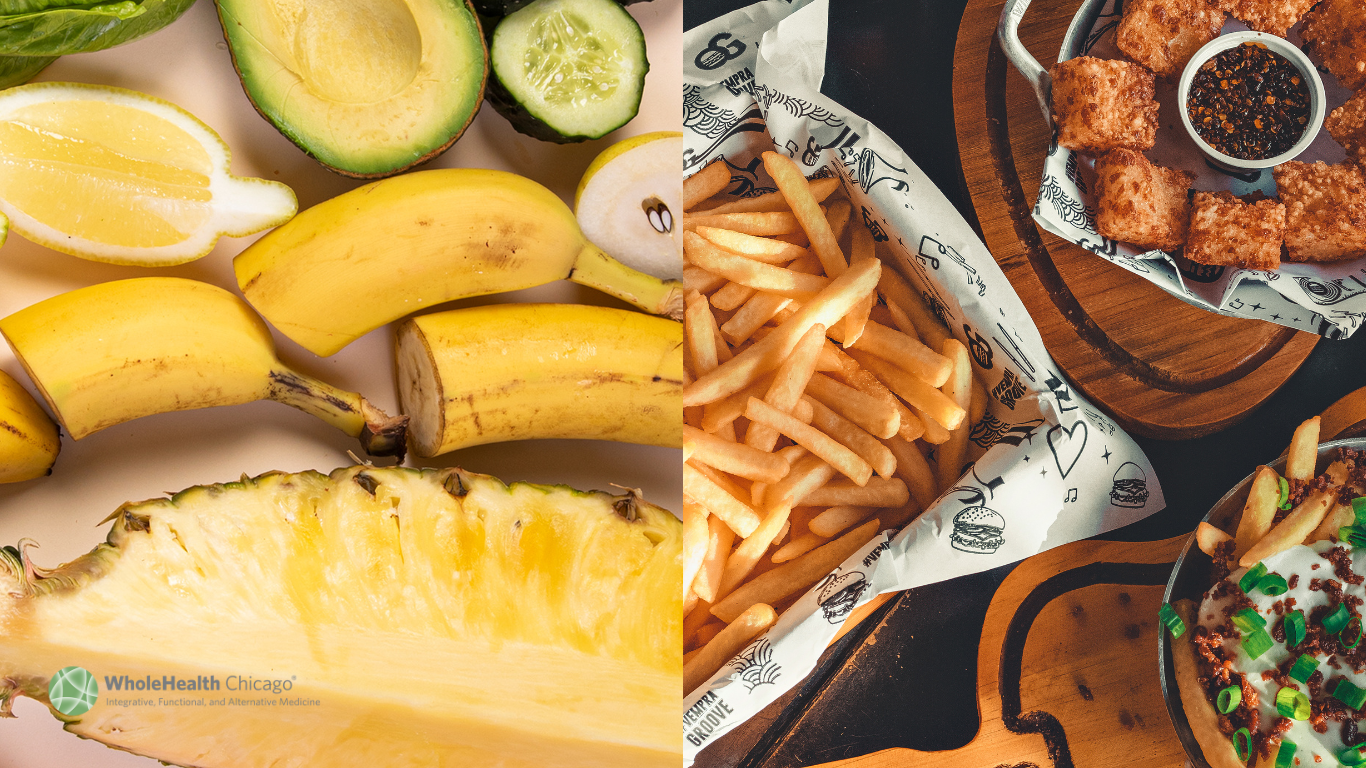Throughout my earlier years as a physician, cancer was considered a diagnosis of the elderly. A person survived infectious diseases of childhood, heart and lung issues of middle age, and then, blind to the risks of smoking and having no access to colonoscopies or CAT scans, would develop cancer in her seventies or eighties and die.
During the past few years, the cancer death curve has shifted to the young. Think of it, now your first colonoscopy is advised at 45, down from 50; your first mammogram was at 40. The real increase has occurred in organs of digestion and detoxification: esophagus, stomach, intestine, liver, gallbladder, pancreas, and kidney. Why these? What has changed?
One major factor is our eating habits. We are hooked on chemically-laced, ultra-processed foods (UPF). Once you’ve eaten a UPF, typically of low nutritional value, your body struggles to extract the nutritional elements from it and clear the non-nutritional, sometimes toxic, chemicals out. These pass through your liver and kidney. Your liver dumps as much as it can into your intestines where the toxins wreak havoc with your microbiome. Changes in your microbiome affect your immune system, your mood, and your susceptibility to intestinal cancers.
Here is the ingredient list of a popular UPF which I will name later:
Confectionary Coating (sugar, palm kernel oil, whey powder, soy lecithin), Corn Syrup, Cereal (corn meal, sugar, palm oil, salt, baking soda, corn flour), Crisp Rice (rice flour, sugar, barley malt extract, salt, refiner’s syrup), Pretzels (enriched flour [wheat flour, niacin, iron, thiamin mononitrate, riboflavin, folic acid], malt, salt, soybean oil), Canola Oil, Fructose, Sprinkles (sugar, corn starch, vegetable oil [palm and palm kernel], dextrin, soy lecithin, confectioner’s glaze, red 40 lakes, yellow 5 lakes, yellow 6 lakes, blue 1 lake, carnauba wax, natural and artificial flavor, red 3, blue 1, red 40), Sugar, Glycerin. Contains 2 % or less of the following: Maltodextrin, Calcium Carbonate, High Fructose Corn Syrup, Sorbitol, Gelatin, Salt, Soy Lecithin, Natural And Artificial Flavor.
Directions: Ready to Eat
This is a Chex Mix Birthday Cake Snack Bar (as of 7/23/23 there were 924, 5-star Amazon reviews: “Tastes great! Love for a snack for the kids to eat in the car on the way to school!”. One purchaser downgraded a star because she couldn’t find a “multipack”.
BUT OF COURSE, WHEN IT COMES TO CANCER OTHER FACTORS ARE AT PLAY
We do know that UPF foods are generally less expensive than whole foods, and the main consumers of UPF foods are low-income families who also have a higher cancer rate than families from higher incomes.
UPF foods are high in fat and sugar, and promote both obesity and inactivity, both of which are cancer risks.
UPF foods are usually started in early childhood, and scientists honestly do not know how efficient the human body is at clearing chemicals it was never meant to ingest in the first place. Scary data is emerging about links between UPFs and brain development in young children and later on, obesity and type 2 diabetes.
So let me end this cheery Health Tip with some steps you can take:
First (and you probably know this), here’s the generally agreed-upon classification of food groups. Obviously, you’ll be avoiding Group 4.
- Group 1 contains “unprocessed or minimally processed foods,” namely the edible parts of plants or animals that have been taken straight from nature.
- Group 2 contains “culinary ingredients,” such as salt, oil, sugar, or starch, which are produced from Group 1 foods.
- Group 3 contains “processed foods”, such as freshly baked bread, canned vegetables, or cured meats, which are obtained by combining Group 1 and Group 2 foods.
- Group 4 contains “ultra-processed foods”. This refers to products that are made with substances derived from Group 1 foods through heavy processing (e.g., hydrolyzed proteins, maltodextrins, hydrogenated fats) and contain several food additives, such as colorings, preservatives, antioxidants, flavor enhancers, and sweeteners.
If you regard yourself as generally healthy, your checkup with your WholeHealth Chicago practitioner will include a blood count, metabolic profile (including liver testing), cholesterol, and vitamin levels. If you have digestive issues, she may suggest a stool analysis like the GI Effects or the GUT Zoomer. There’s an interesting test that measures the two phases of liver detoxification (Hepatic Detox Profile by Doctor’s Data). If you’re over age 50 and cancer is a worrisome issue in your family, I suggest you read about the Galleri Test, in which a single blood draw will screen you for fifty cancers. Check this link If “something” is found, we can refer you to the best specialist available.
As far as supplement recommendations, anticipating for years the hidden UPFs on my plate along with toxins in the environment, I’ve been taking:
- Detoxication Factors (Integrative Therapeutics), twice a day;
- Lipotropic Complex (Integrative Therapeutics), three times daily.
These have several ingredients that support Phase 1 and Phase 2 detox. Previous Health Tips have taught you how to maintain a healthy microbiome.
Be well,
David Edelberg, MD
